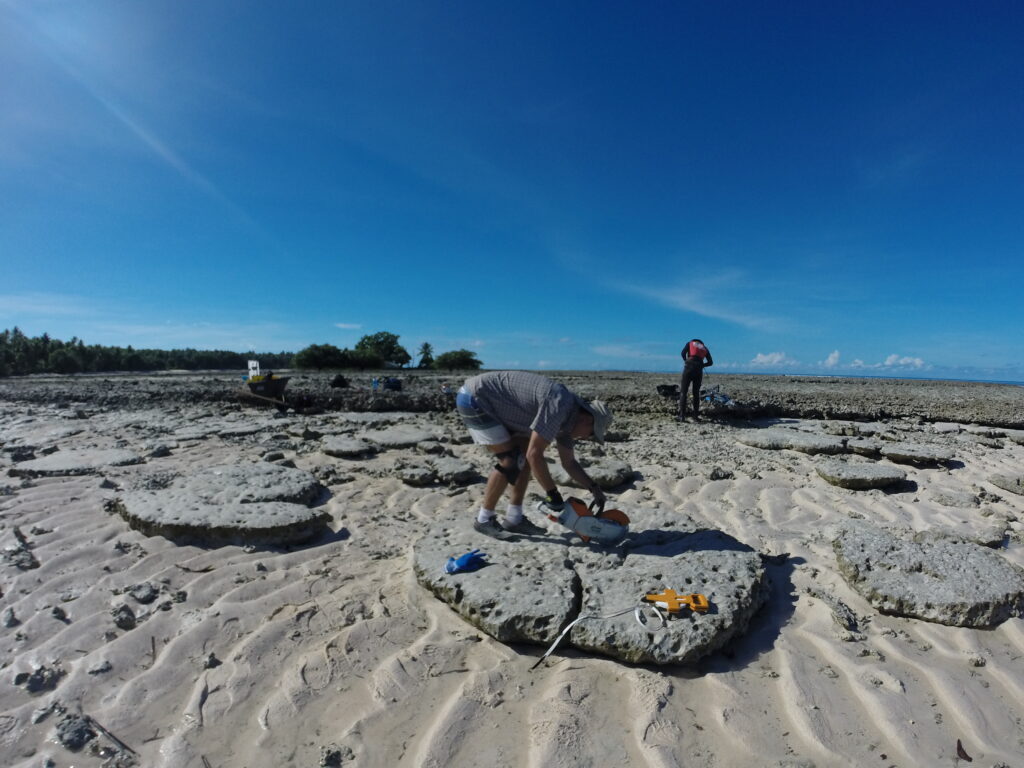The primary driver of the inter-annual climate variability in the Pacific is the El Niño Southern Oscillation (ENSO). ENSO related anomalies in sea surface temperatures (SST) that have likely become more frequent under global warming have resulted in coral mass bleaching events. This poses a threat to coral reef ecosystems and reliant human communities. However, to date, instrumental records of the Pacific climate are too short to determine if recent changes in ENSO variability are primarily due to anthropogenic or natural forcing, and the adaptability of coral communities to increasing thermal stress is not thoroughly understood. This research aims to construct proxy records of ENSO activity and climate conditions, as well as coral calcification, covering the Common Era (0 – 2000 CE) for the West Central Pacific. This is an ocean region from where no such records yet exist. In November 2017, slabs from Porites spp. microatoll skeletons have been collected from the intertidal zone of Arno Atoll, Marshall Islands. Subfossil microatolls often date back to the mid-Holocene sea-level highstand. After sea-level fall, they have become emergent and have subsequently been preserved under sediment. Sclerchronological analysis of these records will allow constructing proxy-records of ENSO and climate conditions for the Common Era. In particular, coupled isotopic (δ18O) and trace element (Sr/Ca, Li/Mg) analyses in high (~bimonthly) resolution will permit for reconstructions in paleo-SST and seawater δ18O(δ18Osw). Furthermore, a γ-densitometer will be employed to determine variations in skeletal density that will allow, in conjunction with measurements of annual extension rates, to construct records of coral calcification. Collected microatolls cover different periods of mean climate conditions. Thus, comparison between reconstructed paleo-ENSO conditions during these periods will allow evaluation of ENSO sensitivity to changes in global mean climate. In the West Central Pacific, δ18Osw variabilities result primarily from the zonal advection of surface waters. Thus, quantification of paleo-δ18Osw will permit reconstructions in ocean and atmospheric circulations. Furthermore, coral communities from the West Central Pacific exhibit a relatively high resilience to thermal stress and it has been proposed that this is an adaption to historical SST anomalies. Comparison between constructed coral growth and paleo-SST records will allow studying how changes in tropical climate conditions have impacted coral health during the Common Era. Ultimately, results of this study will improve projections of future ENSO activity and coral calcification in response to ongoing anthropogenic warming.
Principle Investigator
Oliver Knebel (MARUM, University of Bremen)




